How to Craft the Best Welcome Email to Build Trust With New Subscribers
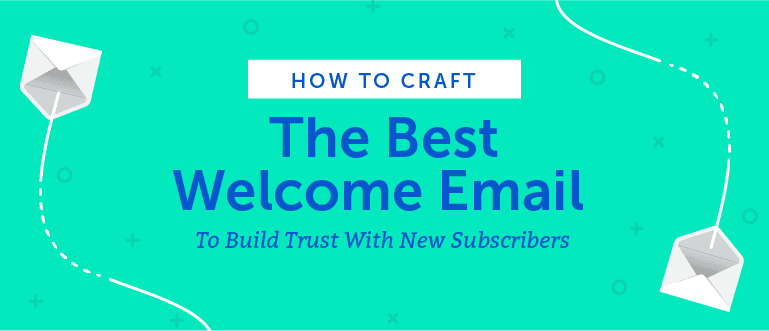 Pop quiz: A visitor comes across your website and decides to subscribe to your email list so they don’t miss out on any special offers, sales, or product launches.
What do you do?
If you’re an email marketer, your answer should be: Send a welcome email.
Seventy-five percent of marketers think welcome emails are effective. Plus, 53% are already using them.
Pop quiz: A visitor comes across your website and decides to subscribe to your email list so they don’t miss out on any special offers, sales, or product launches.
What do you do?
If you’re an email marketer, your answer should be: Send a welcome email.
Seventy-five percent of marketers think welcome emails are effective. Plus, 53% are already using them.
How to Craft the Best Welcome Email to Build Trust With New Subscribers
Click To TweetGet Your Free Welcome Email Template + Bonus Resources
This post is packed full of great advice. But, you could probably use some tools to help pen perfect welcome emails. Enter these four templates:- Welcome Email Copy Template: Craft creative email copy that gets your new subscribers excited.
- Email Subject Line Templates: Write better subject lines to make sure those emails get opened.
- Email Marketing Calendar Template: Plan out your email marketing workflows all on one calendar.
- Email Subject Line A/B Test Template: Track opens on subject lines, and refine them over time.
Write better welcome emails with these templates from @CoSchedule
Click To TweetWhat Makes a Welcome Email So Effective (and Important)?
Three reasons:1 ) The Attention Bonus
Your new subscribers are still in engagement mode and very likely are still online and probably your website, too. In fact, the read rate for welcome emails is 34% as compared to 24% for normal commercial emails.2 ) The Expectation
Frankly, new subscribers sign up fully expecting an email to come to their inbox quickly. This is particularly true if you’re offering a sign-up discount, whitepaper, or other incentive. If you have an audience looking for your message, that’s reason alone to follow through.3) The Opportunity to Get More Data
With so many eyes on your message, why not leverage the opportunity to get more data? Ask your new subscribers for preferences in terms of products and services, message frequency, demographics, etc. The more data you collect, the better you can segment your list and target your future email marketing campaigns. Here is how marketers are currently using their welcome emails: Source: Return Path
Source: Return Path
Here are three reasons why welcome emails are so important for marketers.
Click To TweetPlanning and Executing Your Welcome Email
When putting together your welcome email, keep these 5 steps in mind:1 ) Set Expectations and Keep Them
To build trust amongst your new email subscribers, you need to deliver what you promised at sign-up. Did you promise a discount? A whitepaper? A free trial? Deliver it with your welcome email. Ultimately, your welcome email needs to be the foundation of your email experience with your subscribers. Therefore, setting expectations is important throughout every piece of your welcome email including:- The From Name
- The Subject Line
- Email Copy
 Allowing the user to know exactly WHO the email is from is key. After all, you’re much more likely to open an email from someone you know than someone you don’t.
Subject lines are also important. They can be welcoming, thankful, and back up any sort of discounts or promotions you offered at sign-up. Exclusivity, “special” mentions, etc., can play key roles in subject line effectiveness as well.
Allowing the user to know exactly WHO the email is from is key. After all, you’re much more likely to open an email from someone you know than someone you don’t.
Subject lines are also important. They can be welcoming, thankful, and back up any sort of discounts or promotions you offered at sign-up. Exclusivity, “special” mentions, etc., can play key roles in subject line effectiveness as well.
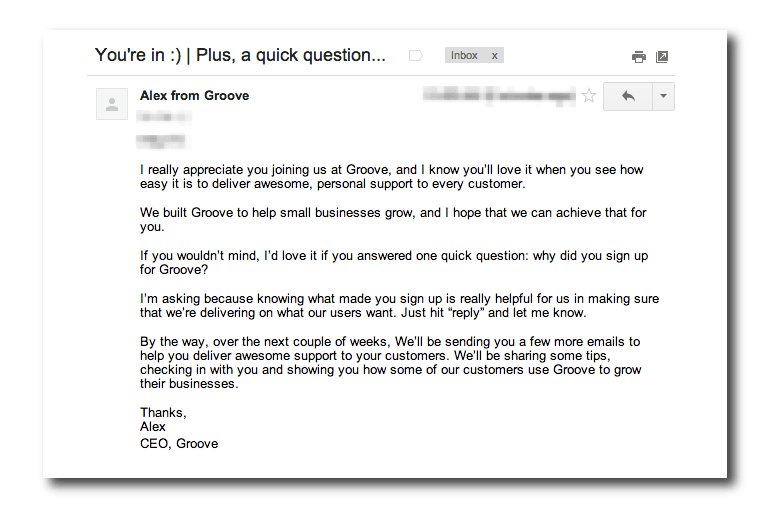 This welcome email from Blurb uses concise text and imagery to give a clear idea to the subscriber about what to expect.
This welcome email from Blurb uses concise text and imagery to give a clear idea to the subscriber about what to expect.
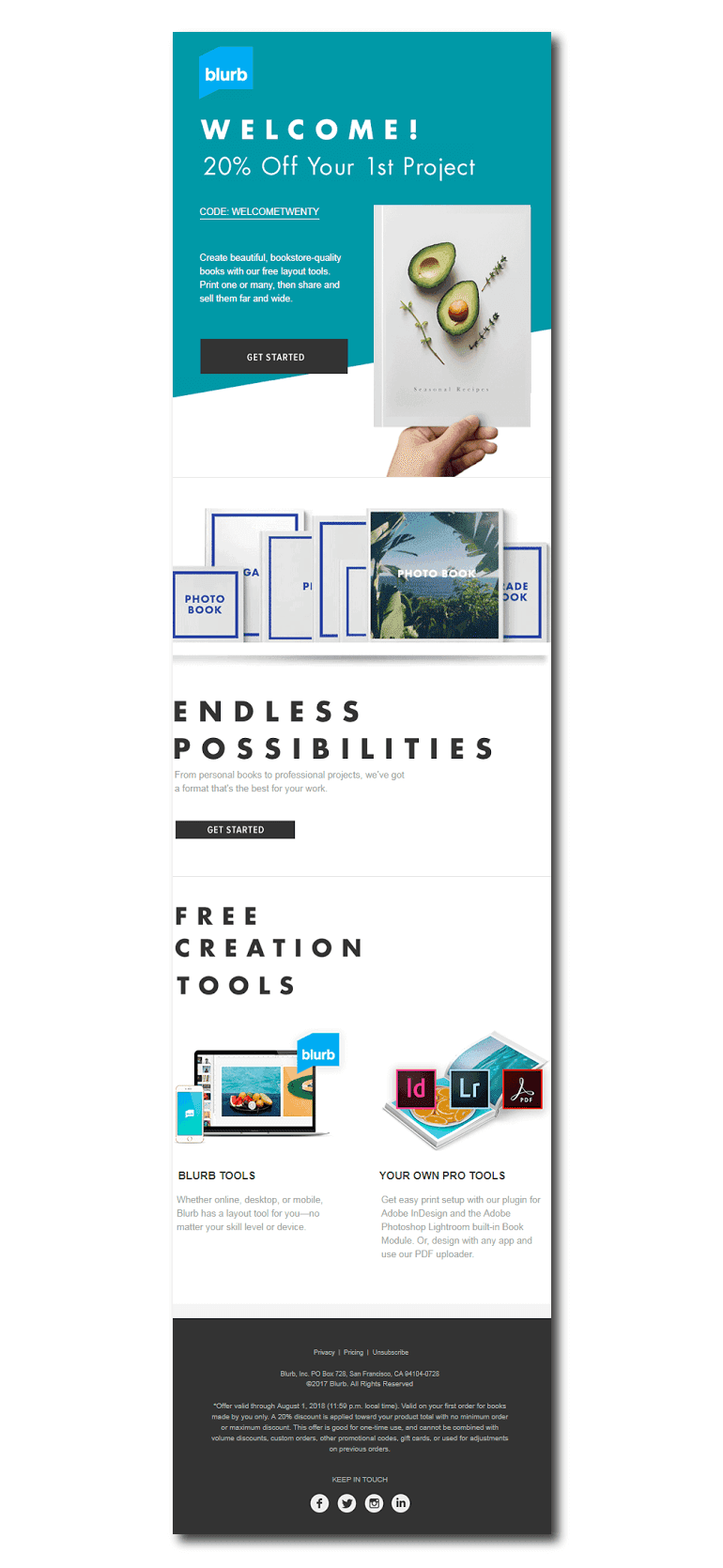 2 ) Use What Data You Have to Personalize Your Welcome Email
2 ) Use What Data You Have to Personalize Your Welcome Email
Make use of whatever information you have or collect sign-up to personalize your welcome message. For example, if you have first name, use it.
Hope For Justice is a non-profit organization that has used ‘first name personalization’ in their welcome email subject line, thereby enhancing the open rates.
 See how Freedom includes the first name of the subscriber in their welcome email.
See how Freedom includes the first name of the subscriber in their welcome email.
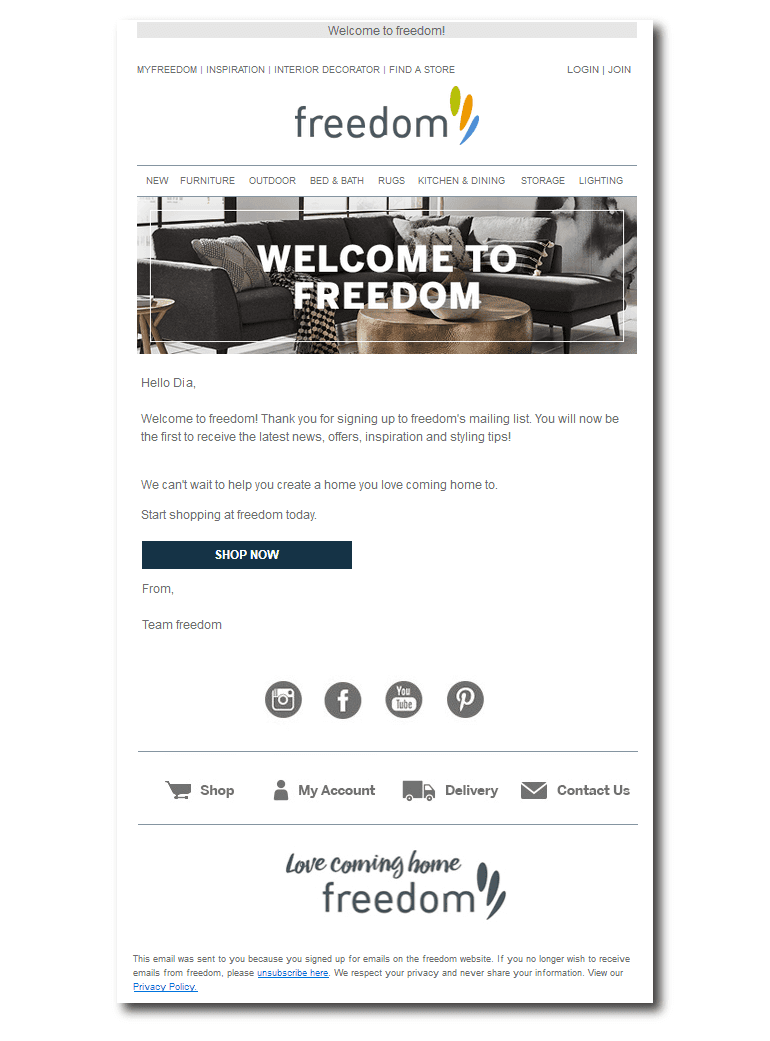 Office asks for the subscriber’s birthday in the last email of their welcome email series with an enticing copy and CTA “I WANT A BIRTHDAY GIFT”.
Office asks for the subscriber’s birthday in the last email of their welcome email series with an enticing copy and CTA “I WANT A BIRTHDAY GIFT”.
 Provide information and content that’s relevant to how they signed up or what they signed up for. For example:
Provide information and content that’s relevant to how they signed up or what they signed up for. For example:
- If they signed up directly: Provide brand and product/service information.
- For new customers: You can cross-sell similar or “next logical” products.
- For someone who requested a whitepaper or similar document: Provide the link to download.
- For someone who requested a demo on your website: Use this space for content that is aimed at getting the demo started.
3 ) Design Compelling and Prominent CTAs
The marketer’s reason behind a welcome email (and email marketing in general) is converting subscribers into customers. Your call to action (CTA) should be first and foremost in your mind in terms of how to design your welcome email. Simply put, it should be obvious what you want your customers to do. Your copy (and buttons) should be concise and easy to find. Hollister includes two distinct CTAs targeted to ‘guys’ and ‘girls’. The readers know exactly what the CTA is intended to do. Eddie Bauer includes one primary CTA that allows the subscribers to meet their team, with additional supporting CTAs that urge readers to involve themselves more into the brand on their social channels and blog.
Eddie Bauer includes one primary CTA that allows the subscribers to meet their team, with additional supporting CTAs that urge readers to involve themselves more into the brand on their social channels and blog.
 If you want to draw more attention to your CTA, you can use an interactive element like an animated gif or even a countdown clock to generate urgency around a special offer.
If you want to draw more attention to your CTA, you can use an interactive element like an animated gif or even a countdown clock to generate urgency around a special offer.
4 ) Use Color Effectively
Colors can influence perception with your customers. Want proof? 60% of emails distinctly use the color blue. It represents trust, integrity, and efficiency, all virtues that are very important to consumers.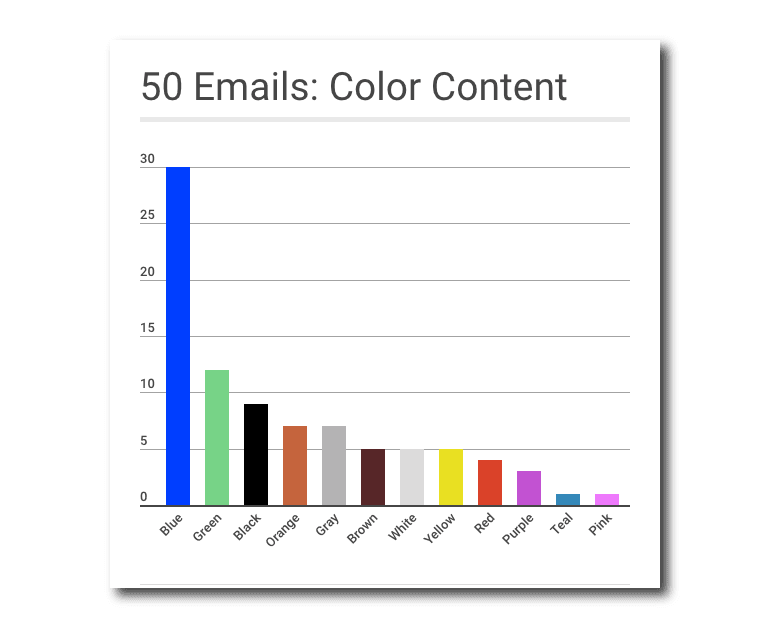 5 ) Introduce New Subscribers to Your Social Channels
5 ) Introduce New Subscribers to Your Social Channels
The time when someone subscribes to your emails is when they are most interested in your brand. This is a great time to tell them about other ways to connect with you—namely your social media pages. Give them a reason to do so—for example, tell them that it is on social media that you disclose your offers first. They are more likely to follow you on social media now than any other time because they are curious about your brand.
McDonald’s launches the third email of their welcome series with the subject line “We’ve got a real connection” to promote their social media channels and acquire more subscriber information.
 Below, see how Office highlights their social media channels under the heading “Let’s hang”. Note: Also notice the request to get whitelisted at the outset of the email.
Below, see how Office highlights their social media channels under the heading “Let’s hang”. Note: Also notice the request to get whitelisted at the outset of the email.
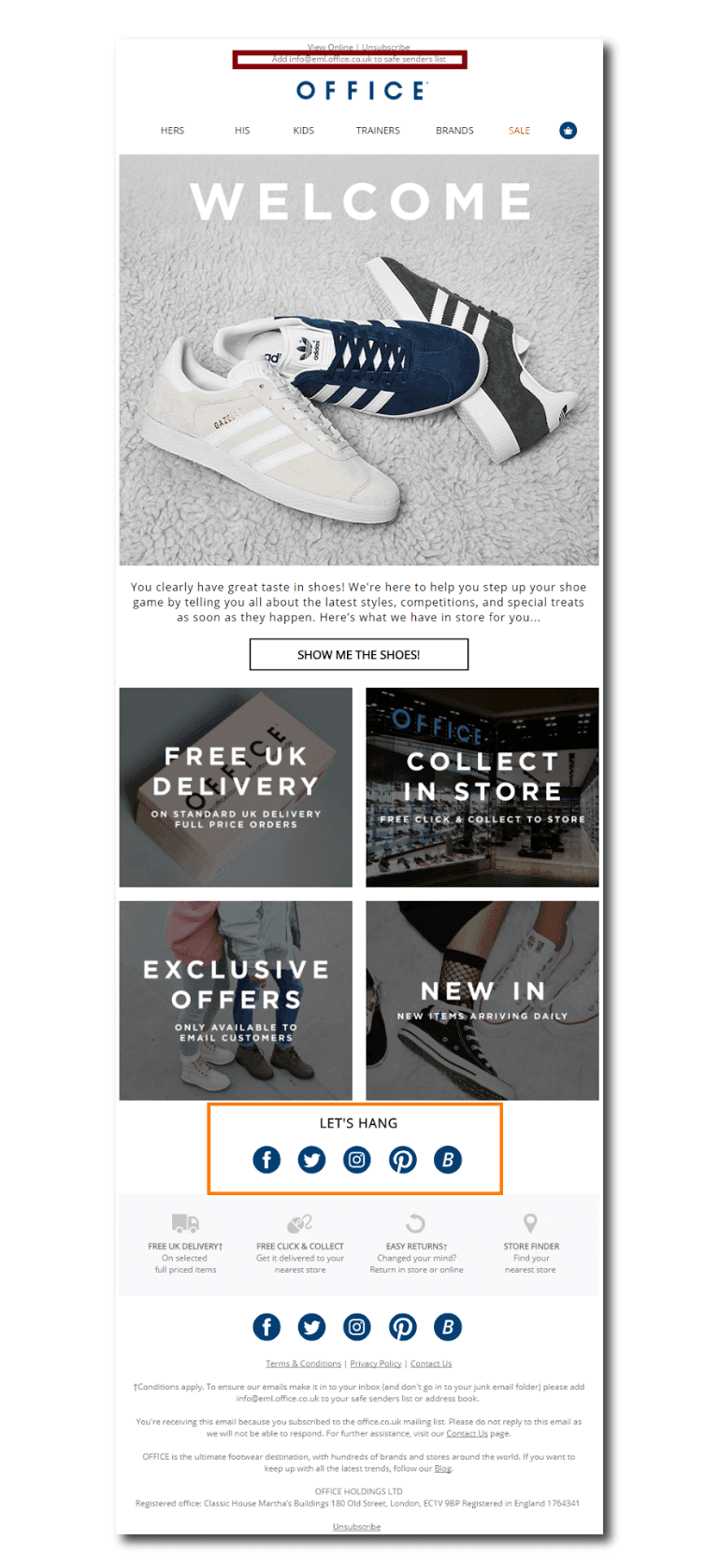 6 ) Send Immediately
6 ) Send Immediately
Ideally, a welcome email is sent immediately after someone signs up for your mailing list. As mentioned previously, these new subscribers are most engaged and likely still on your website. Make sure your automation is set right to deliver your welcome message as soon as possible.
Multiple Welcome Emails Can Be Better than 1
You may have a lot that you want to share with your new subscriber. But conveying it all in one email could simply be too much. Sending a series of welcome emails can help you build trust in your brand as you gradually provide all the information new subscribers may be looking for. How many emails you include in your series is up to you. I usually recommend starting with a 3-email series.Your First Email
Sent immediately after you’ve received the subscriber’s email address. You should include:- A sign-up confirmation message
- Some sort of ‘Thank You for signing up’ or ‘Welcome onboard’ messaging
- Language that sets subscriber expectations. Tell them what to expect and when to expect it.

Your Second Email
Sent 24 hours after the first email is sent. Some elements you can include:- Social media links to connect with them on other platforms.
- Your bestselling products (or product categories)

Your Third Email
Sent 2 days after the second email is delivered. Some elements you can include:- Local store information
- Product information
- A request to collect additional subscriber data

Examples of Welcome Emails You Will Love
Welcome emails are crucial for creating a good first impression. I’ve rounded up some quality B2C and B2B welcome email examples that I think do just that.1 ) BBC
They begin by setting the stage for what the subscribers can expect in the days to come and when they will be receiving emails. They suggest videos that the subscriber may like to check out—adding that the suggestions may not be spot on. The BBC uses this opportunity to ask for further engagement so they can collect more data and deliver better suggestions. Nice work!
2 ) Boden
Boden welcomes the new subscriber by telling the subscriber about the benefits they will be enjoying by joining the brand’s email list. They also offer a 15% welcome discount and free shipping. They complete the package by providing links to social platforms in the footer. 3 ) Best Buy
3 ) Best Buy
A warm welcome with solid, prominent CTAs, links to important categories, and social buttons in the footer.
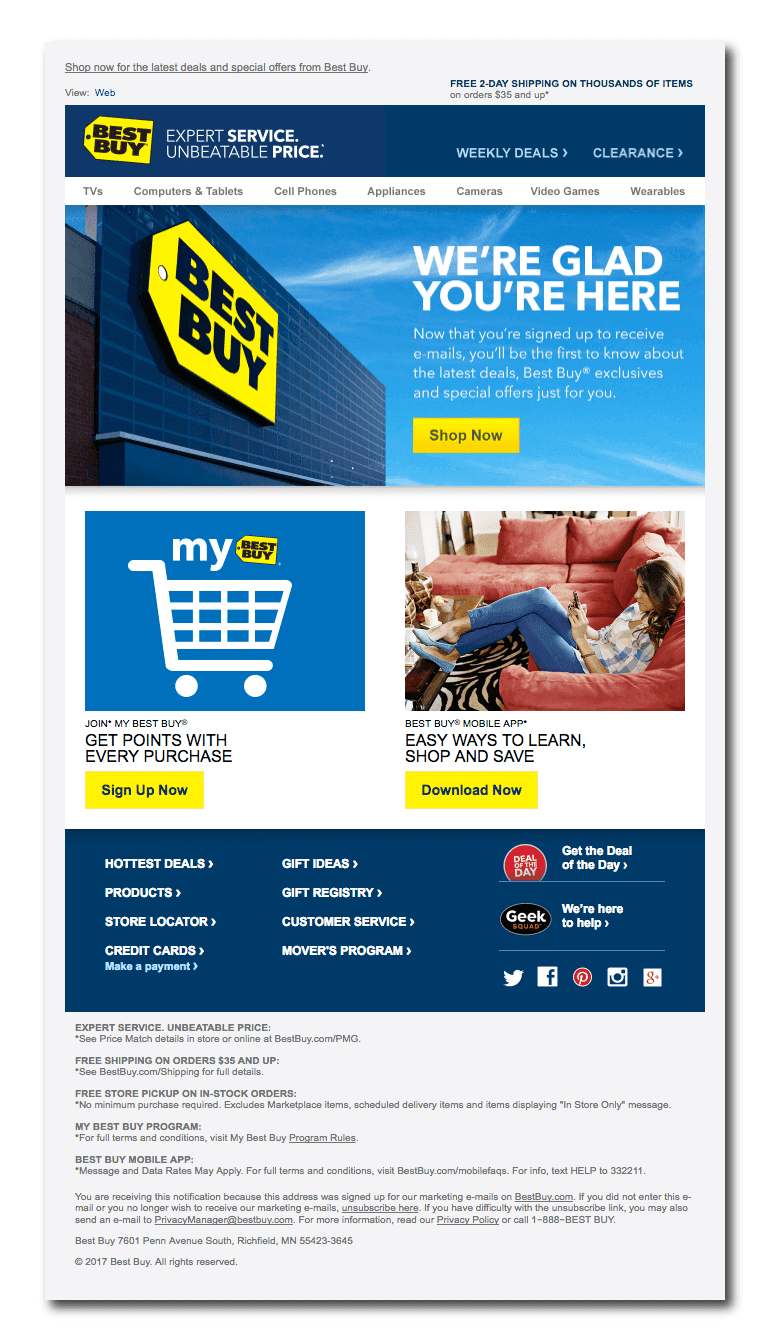 4 ) Cotton On
4 ) Cotton On
This email begins by introducing the subscriber to the Cotton On family of brands. They personalize the email by adding the subscriber’s first name. A coupon code to redeem a 20% welcome discount makes the email even more engaging. They also prominently display the link to the preference center where the subscriber can set their email preferences.
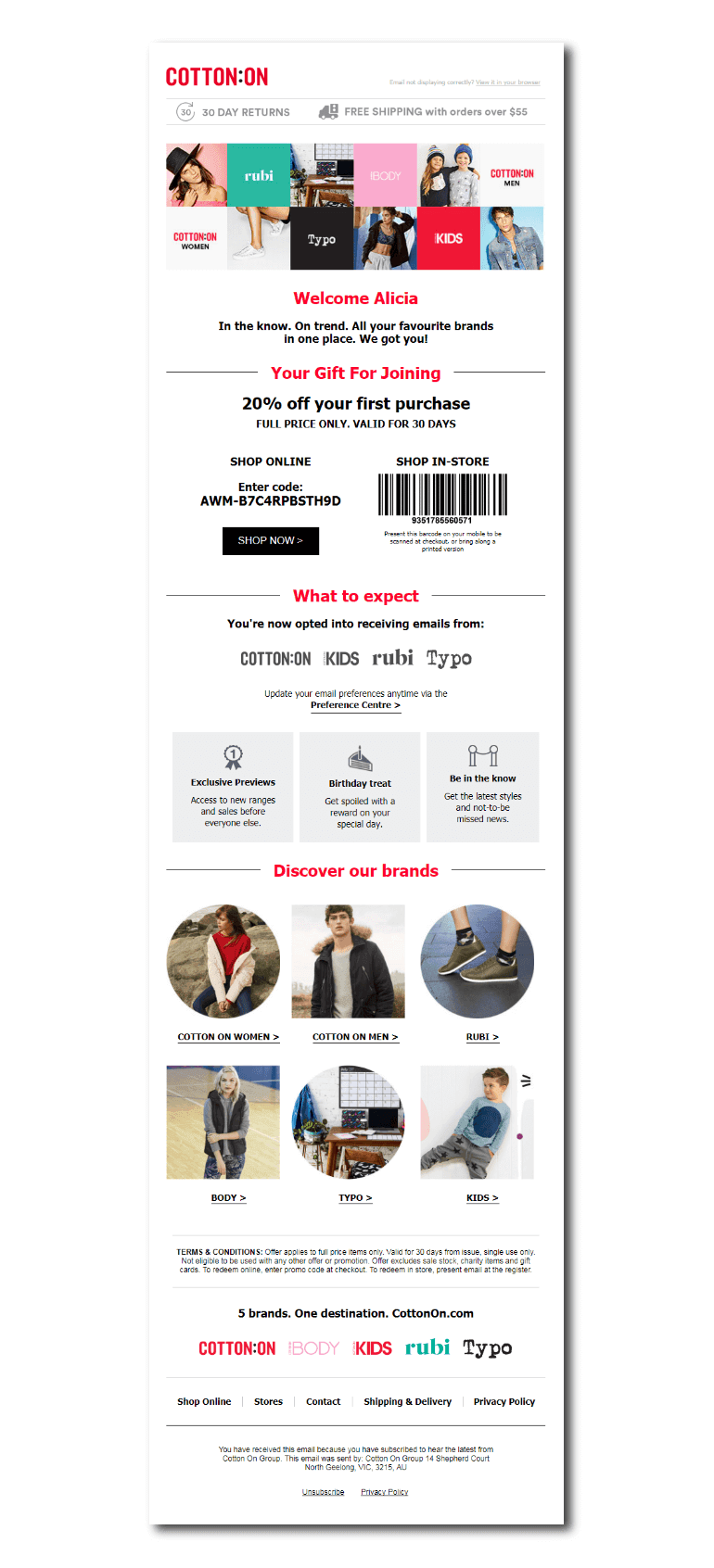 5 ) J. Crew
5 ) J. Crew
J. Crew keeps it simple. They nudge the subscriber to explore their website through two links (they could test CTA buttons). Through a secondary offer, the subscriber can also sign up for the style guide. Social buttons are included in the footer but are not prominent.
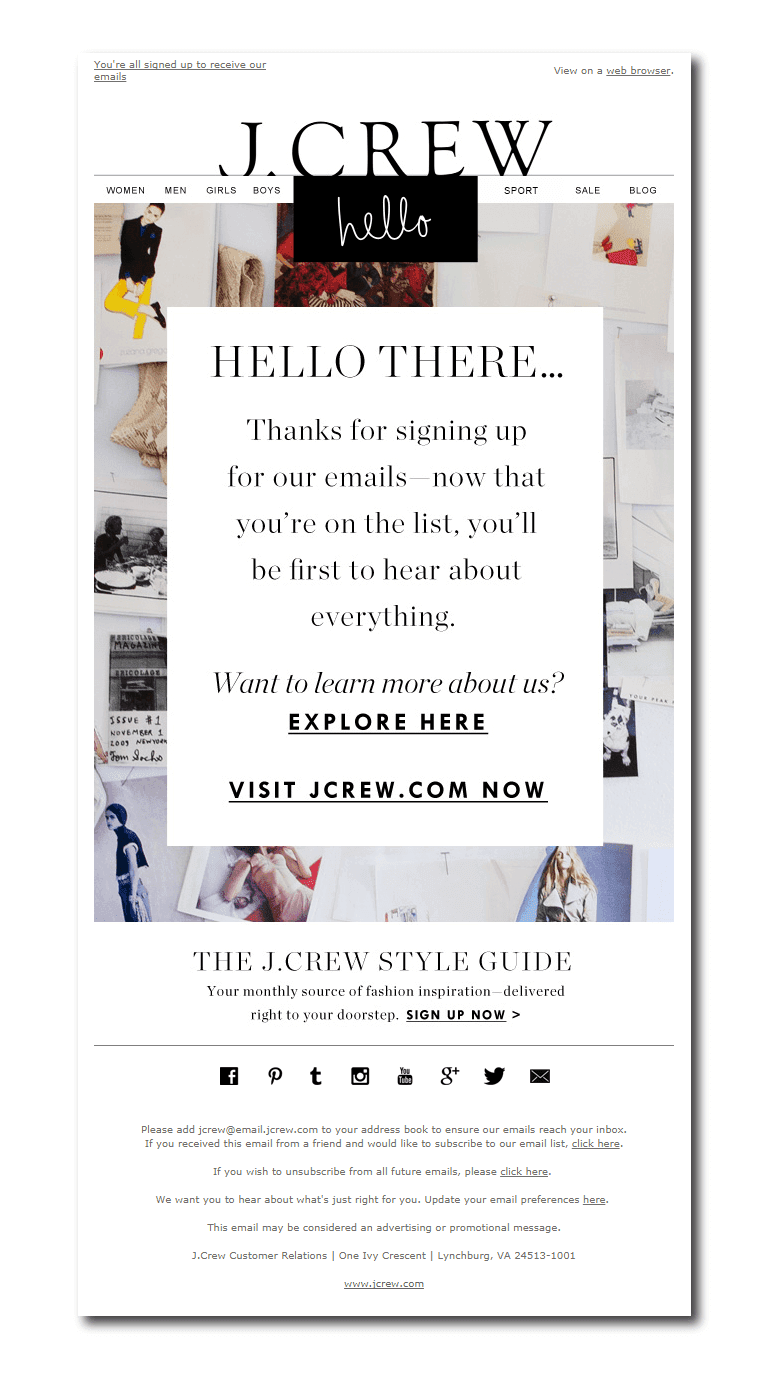 6 ) GoDaddy
6 ) GoDaddy
This is a nice approach from GoDaddy. They provide help to businesses in making the right domain name choice through 10 tips. They also highlight the first purchase discount at the top along with a prominent CTA.

Let’s Recap
Here are some common best practices to follow.- Send your welcome email or the first in the series immediately after sign-up. Any delay can affect campaign performance and subscriber engagement moving forward.
- Keep your welcome email simple. A straightforward, scannable design, a warm welcome, and a brief description of what they can expect in your future emails should do the trick.
- Personalize your email with the help of whatever data you have—subscriber name, first interaction point, etc. A personal touch can go a long way.
- Use imagery and colors that are consistent with your brand. There should be no disconnect between the look and feel of one channel to another.
- Use automation to make your life easier. Set rules for welcome emails to be triggered on completion of signup forms, document download requests, free trial requests, and even new purchases.
- Get your subscribers to whitelist your sender email address so that your future email campaigns don’t end up in the spam folder.
- Set the wrong expectations. Deliver what you promise. Nothing can harm your reputation more than not fulfilling a promise.
- Showcase links to social channels on which you are not active or are not relevant.
- Brag (too much) about your brand or product/services. Take an inbound approach to your content and let subscribers know how you or your product/service can help them solve a problem.
Here's how to write the perfect welcome email sequence to convert subscribers into customers.
Click To Tweet

